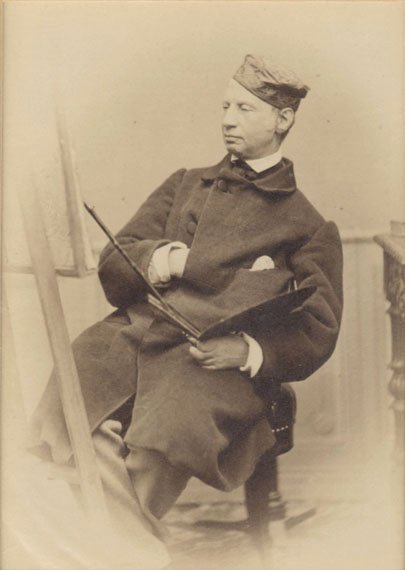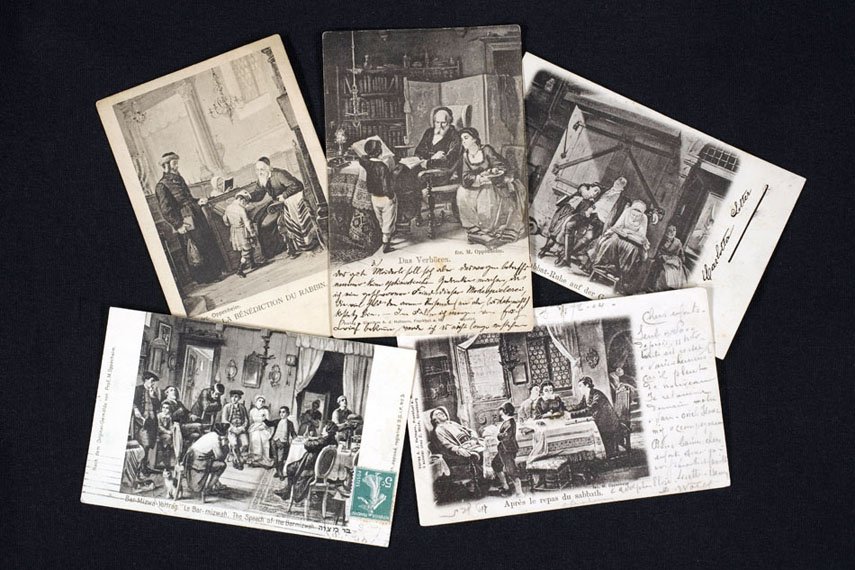Moritz Oppenheim
Moritz Daniel Oppenheim (1800-1882) was the first and most successful Jewish artist of the nineteenth century. Born in Hanau, Germany, he rose to prominence as a portrait painter. The Sondheim collection, with its emphasis on depictions of Jewish daily life and religious ceremonies, has a number of different versions of Oppenheim's hugely influential series, Bilder aus dem altjüdischen Familienleben, or Scenes from Traditional Jewish Family Life.
The popularity of this series, first published in 1866, can be inferred from the many different publications and editions. The original form of the work was a series of twenty paintings which Oppenheim repainted in shades of grey in a technique known as 'grisaille,' in order to facilitate lithographic reproduction.
The different versions presented in this section are from several editions -- in German and Dutch -- and French and German postcard series. Oppenheim's images reflected the vogue for sentimental scenes of domesticity current in the first half of the nineteenth century, but they continued to be reproduced through the twentieth century. Like Bernard Picart a century before, Oppenheim established a new iconography for depicting Jewish life and customs.


